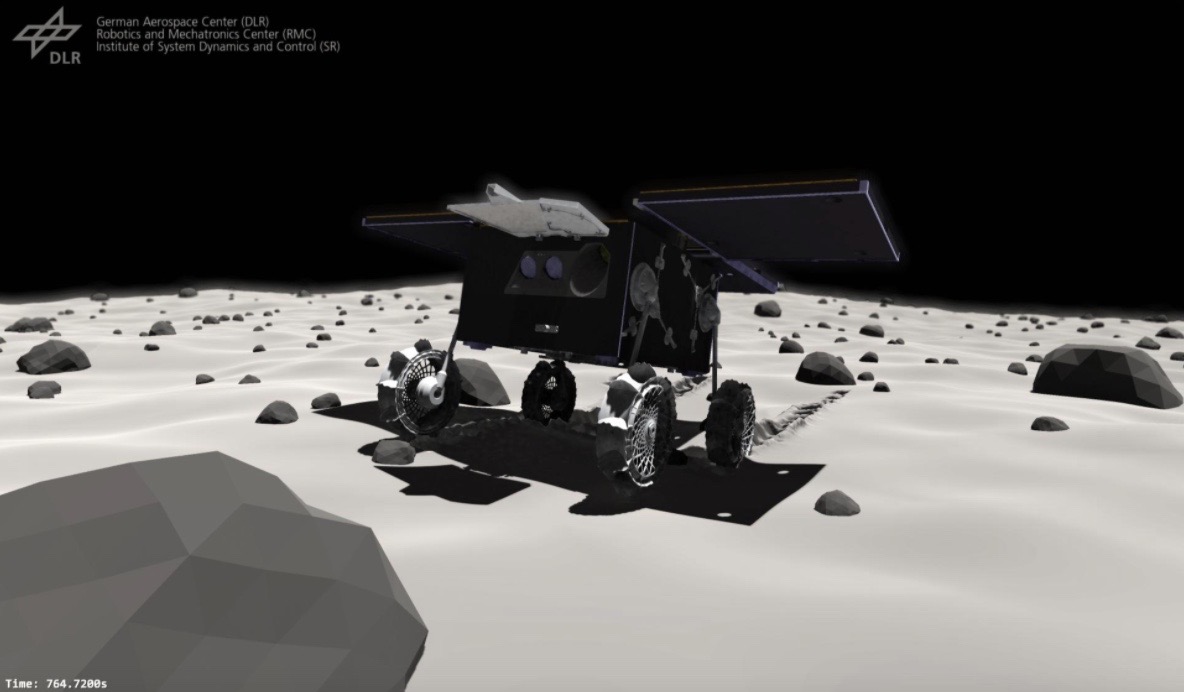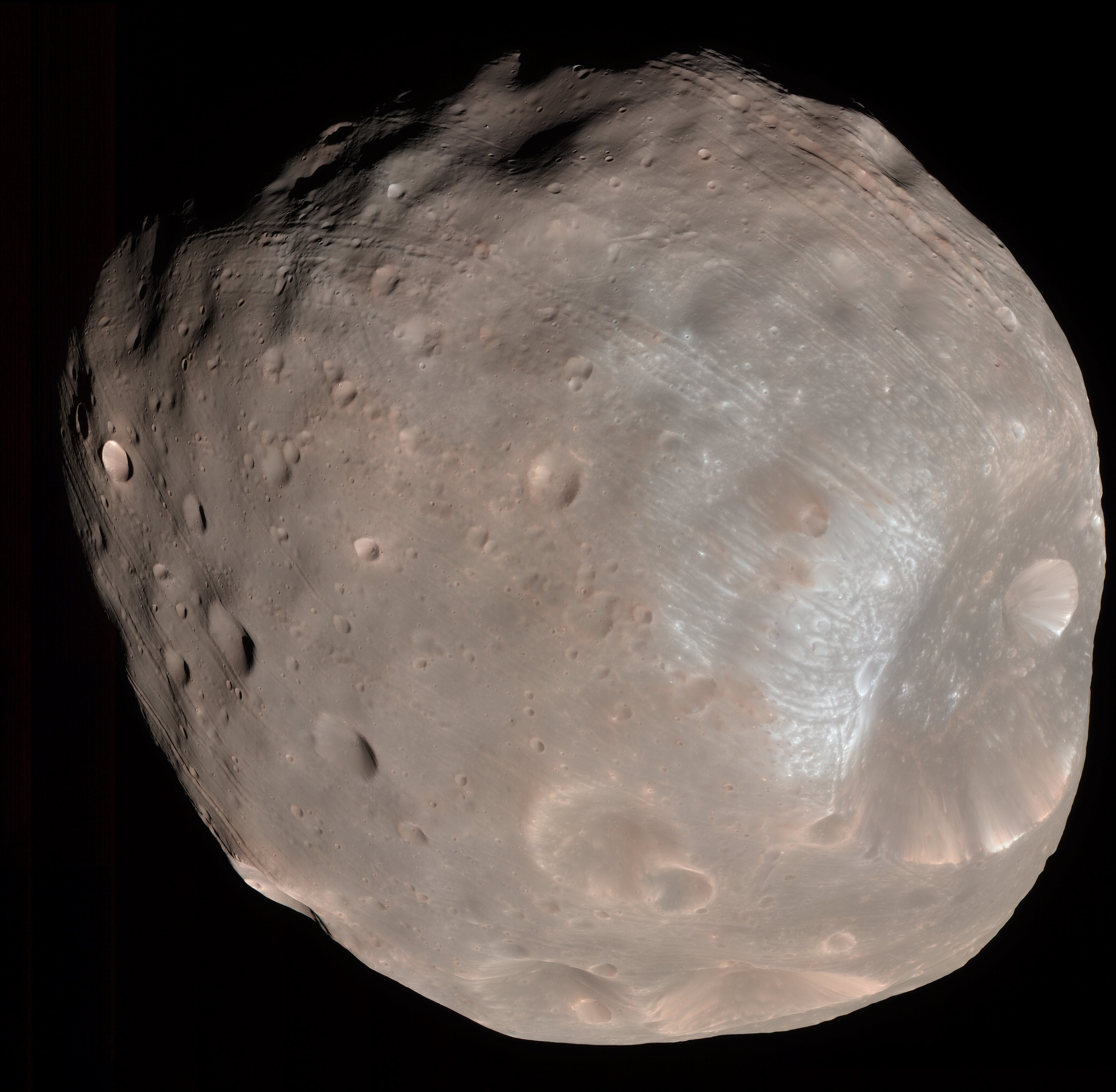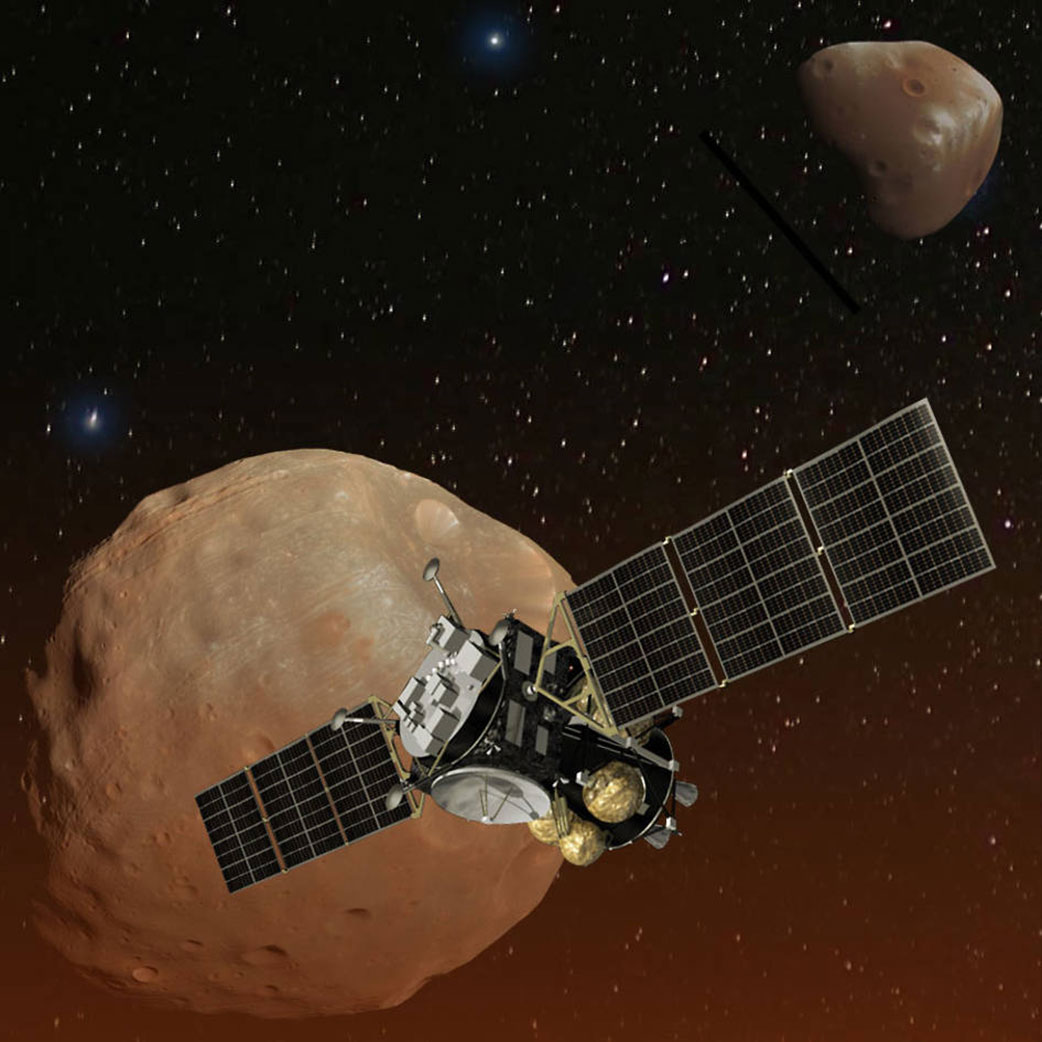
The first rover to explore the moon of another planet has started practicing for its landing, even though that historic touchdown is at least six years away.
The 55-lb. (25 kilograms) robot is part of the Japan Aerospace Exploration Agency's (JAXA) Martian Moons eXploration (MMX) mission, which is scheduled to launch in 2024 and arrive at the Red Planet the following year.
In late 2026 or early 2027, the MMX Rover, which is being developed by a German-French team, will descend to the surface of the 14-mile-wide (22 kilometers) Phobos, the larger of Mars' two moons. (The smaller one, Deimos, is just 8 miles, or 13 km, across.)
Related: 7 biggest mysteries of Mars

The four-wheeled robot will do so in freefall, from an estimated height of 130 feet to 330 feet (40 to 100 meters) — a dramatic drop that mission team members have begun simulating at the German Aerospace Center's Landing and Mobility Test Facility in Bremen.
"Under laboratory conditions, we drop the preliminary model of the MMX Rover from a height of five centimeters [2 inches] onto a changeable surface at various angles," test manager Michael Lange, from the DLR Institute of Composite Structures and Adaptive Systems, said in a statement. (DLR is the German acronym for the German Aerospace Center.)
"In this way, since Phobos has only approximately two thousandths of Earth's gravity at its surface, we can simulate the intensity of the impact for the rover structure," Lange said.
Get the Space.com Newsletter
Breaking space news, the latest updates on rocket launches, skywatching events and more!
That impact could hit the MMX Rover in pretty much any orientation and may include a collision with a jutting rock, mission team members stressed. So that changeable surface is getting a workout.
"The exact location of the landing on the surface of Phobos is a matter of chance. and we are using these analyses to prepare for the various possible scenarios," Michael Wrasmann, from the DLR Institute of Space Systems, said in the same statement.
The rover team's touchdown prep also includes computer modeling. Such work, combined with the drop tests, will help inform the final design on the MMX Rover, which will be less than 2 feet (0.6 m) long.

The MMX mission aims to clarify the origin and evolution of Phobos and Deimos, which remain shrouded in mystery. For example, some researchers think the two moons are captured asteroids, whereas others posit that they're former pieces of Mars blasted into space by powerful impacts.
MMX is a sample-return effort. The mission's primary spacecraft, a Mars orbiter, will snag a sample from Phobos and return the material to Earth. The MMX Rover won't be part of the return cargo; the little robot will gather data on the moon's surface for about 100 Earth days and remain there after its operational life has ended.
The MMX Rover continues the extensive collaboration among JAXA, DLR and the French space agency, CNES. DLR and CNES also contributed the Mobile Asteroid Surface Scout (MASCOT) lander to JAXA's Hayabusa2 mission, which explored the near-Earth asteroid Ryugu in detail. MASCOT beamed home up-close imagery of Ryugu's rugged surface, and the Hayabusa2 mothership collected samples from the asteroid that are scheduled to land on Earth this December.
Mike Wall is the author of "Out There" (Grand Central Publishing, 2018; illustrated by Karl Tate), a book about the search for alien life. Follow him on Twitter @michaeldwall. Follow us on Twitter @Spacedotcom or Facebook.
Join our Space Forums to keep talking space on the latest missions, night sky and more! And if you have a news tip, correction or comment, let us know at: community@space.com.

Michael Wall is a Senior Space Writer with Space.com and joined the team in 2010. He primarily covers exoplanets, spaceflight and military space, but has been known to dabble in the space art beat. His book about the search for alien life, "Out There," was published on Nov. 13, 2018. Before becoming a science writer, Michael worked as a herpetologist and wildlife biologist. He has a Ph.D. in evolutionary biology from the University of Sydney, Australia, a bachelor's degree from the University of Arizona, and a graduate certificate in science writing from the University of California, Santa Cruz. To find out what his latest project is, you can follow Michael on Twitter.









